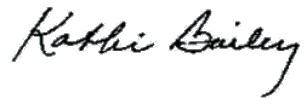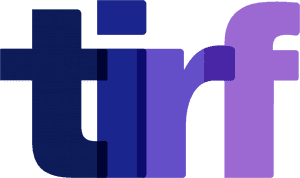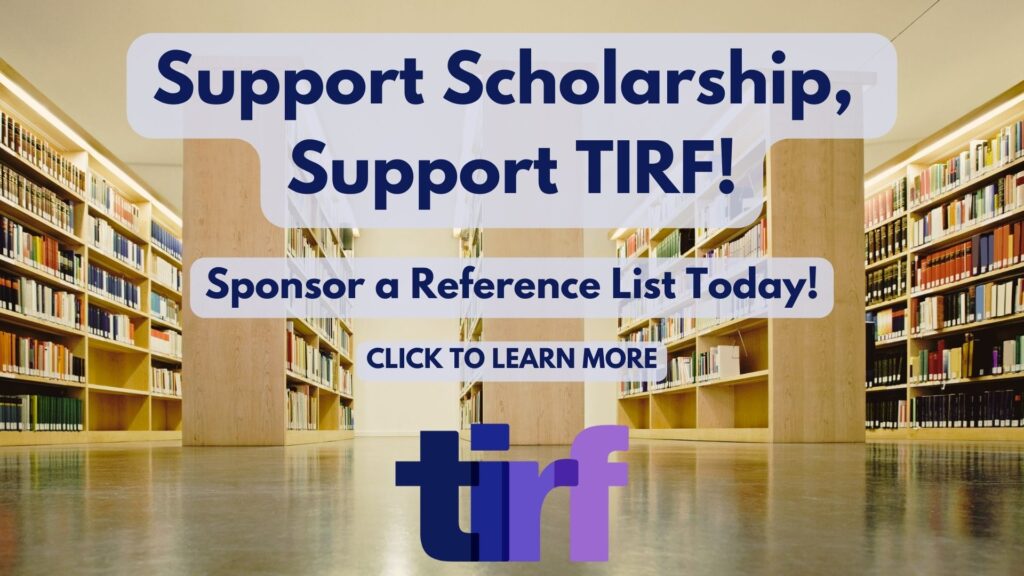In thinking about a topic for my penultimate Chair’s Report, I asked Ryan Damerow, TIRF’s Chief Operating Officer, for his suggestion. Since 2010, Ryan has edited and produced our newsletter. He suggested that I look back at the past 13 years (the period during which I’ve been TIRF’s President) and write about TIRF’s accomplishments during that time.
In some cultures, 13 is considered to be an unlucky number, but for me, as a volunteer for TIRF, these have been wonderful years. I am very grateful to have had the opportunity to serve as the Foundation’s President and the Chair of the Board of Trustees.
So what are TIRF’s 13 accomplishments that I am most proud of? Because TIRF supports and promotes research, and I am fond of working with data, I will share some facts and figures with you in answering this question.
#1. TIRF’s Communications Systems
Let’s start with the newsletter itself as one of TIRF’s ways of communicating with the wider world. In preparing this month’s Chair’s Report, I skimmed over all of the previous issues of TIRF Today. What happy memories!
I became the Foundation’s President in September of 2009, and a year later – on the advice of a friend who is a professional fundraiser – we began to publish TIRF Today. (You can see the initial issue by clicking here.) My friend told me never to ask for a donation until we’d shared three pieces of good news – preferably three accomplishments of the Foundation – with our stakeholders. So Ryan and I put out the first issue of this newsletter in September of 2010. We have been sharing TIRF’s good news ever since!
This month’s issue is volume 13, number 7. In other words, we have produced 143 newsletters. In that time, the readership has grown from about 250 people to approximately 13,000. But TIRF Today represents only one way that TIRF communicates with its supporters. We also have grown our social media presence over the years, resulting in thousands of followers combined across Facebook, LinkedIn, and Twitter. I am very proud of the growth in our worldwide communications with the TIRF community, particularly as its membership is so diverse and so international.
#2. Growth in the Use of the Foundation’s Website
Another important way of communicating with our stakeholders is TIRF’s website. It has been upgraded and expanded twice, with financial support from our former Trustee, Mr. Reece Duca. The two upgrades we completed (one in 2010 and the other in 2021) since our initial site was created have required a great deal of time, planning, communication, organization, and attention to detail. The upgrades have allowed us to refresh our brand at different intervals, improve functionality and access, add new features that were previously unavailable, and consider the ways in which we convey our message and mission to the public.
TIRF has a large and varied digital audience around the world, and that audience has steadily grown in the past 13 years. In 2010 (when we started tracking website use), Google Analytics data showed us that we had 20,239 unique visitors. This past month, that number reached 478,502 – nearly half a million people – from all but one country of the world. This growth in web traffic over the years shows that more and more people are interested in the Foundation’s work.
#3. Resources on TIRF’s Website
I am pleased to note that while TIRF’s mission centers around research, our website provides access to resources for many different language professionals. Links can be found to journals in our field, like-minded organizations, conferences organized on language-education topics, teachers’ associations, and others.
Beyond the resources named above – all of which have their own landing pages – TIRF also curates and shares resources via its “Resource Library.” Teachers, in particular, are encouraged to utilize this section of our website. They can select from the different resource types we share and filter by the various tags available. For example, teachers looking for resources specific to young learners can select the appropriate tags and what will be revealed are tools and links they may utilize for their lesson planning and instruction. It is our hope that these resources will be helpful to teachers around the world.
#4. The Reference List Collection
One part of TIRF’s resources that I am particularly proud of is the collection of free, downloadable reference lists on a range of topics of interest to language education professionals. Years ago, I began providing paper copies of relevant reference lists to students in my graduate seminars, to aid them in their research and their literature reviews for assignments. I was very pleased (and not really surprised) to find in the minutes of an early TIRF Board meeting that the first Trustees had suggested making reference lists available to TIRF’s stakeholders. So, as our first website was being created, I shared those reference lists and made a pledge to update and curate the collection.
Today, the collection consists of free, downloadable reference lists (stored as Word documents) on over 230 topics. Anyone can download and use these lists, and anyone can suggest additions. A recent development is that organizations can now sponsor reference lists, thereby contributing to the Foundation’s revenues. While fundraising via reference list sponsorship wasn’t an original goal of this activity, it’s exciting that diligent collaborative work over the years is resulting in monetary gain while garnering the support of like-minded organizations in our field. I am very grateful to all the colleagues who have shared their citations with us – particularly the Doctoral Dissertation Grantees (DDGs), whose final reports are a great source of new material. You can see the list of topics and the names of the reference list contributors by clicking here.
#5. The “Global Research on Teaching and Learning English” Series
In 2012 at the TESOL Convention in Philadelphia, Pennsylvania, Ryan and I met with Naomi Silverman, who was at the time a Publisher at the Routledge office in New York. We wanted to talk to her about the possibility of publishing a volume of reports based on the studies completed by the nine recipients of the Sheikh Nahayan Fellowships, which TIRF administered. Those scholars had been funded to complete their doctoral research on the teaching and learning of English in the Arabic-speaking world. Naomi did indeed agree to publish that volume, but she surprised us by suggesting we launch a series of books based on TIRF-supported research. (I told Ryan as we left that meeting that I felt as if we had gone prepared to ask Naomi for the publication version of a date but ended up getting engaged!)
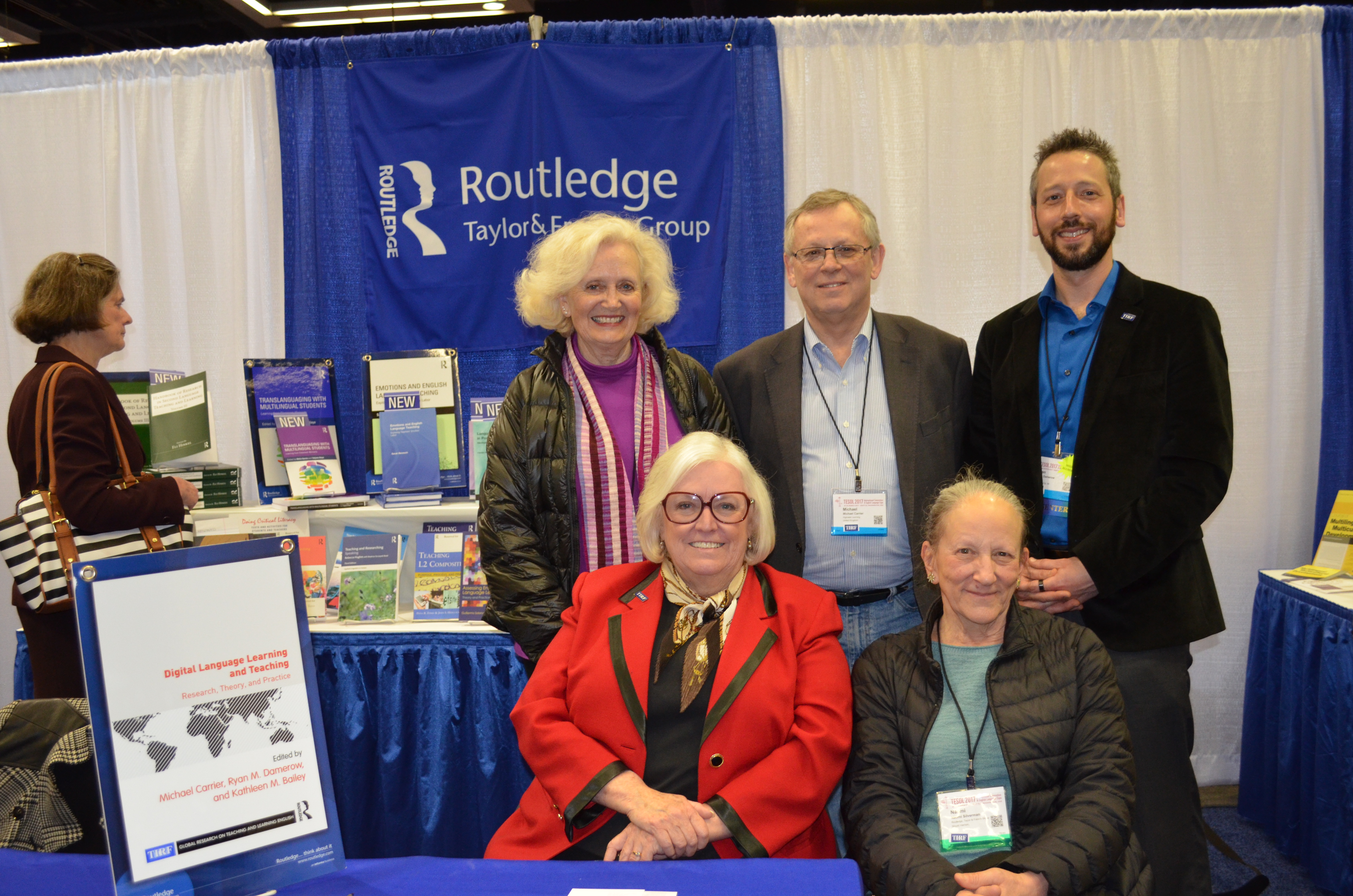
That first volume, entitled Teaching and Learning English in the Arabic-Speaking World, was published in 2014. Since that time, TIRF and Routledge have co-published eight more volumes of research in the series called “Global Research on Teaching and Learning English.” There is also a “FreeBook” on language teacher education available, which consists of a chapter from each volume in the series published up until that time. Since Naomi’s retirement, we have been working with her wonderful successor, Karen Adler, a Senior Editor at Routledge. I am very grateful to them both and to the entire Routledge team for their support and creativity.
Let me add that I am also grateful to all the authors and editors of these volumes, since they agreed to forego any honoraria or royalties. As a result of their generosity, the proceeds realized through the sale of these books have gone to support TIRF’s programs. I also want to acknowledge that the production of six of these books was supported by my school, the Middlebury Institute of International Studies at Monterey (MIIS), which funded some amazing graduate students to serve as the editorial assistants and project managers to help with the volumes that I co-edited.
#6. Additional TIRF Publications
In addition to the book series, which is geared for research-oriented readers, the Foundation has also produced publications intended for a wider audience. The first of these, The Impact of English and Plurilingualism in Global Corporations, came out in 2009. Since that time, there have been two publications about online language teacher education, and six reports on mobile assisted language learning (including comments from practitioners). These resources can be found on TIRF’s website.
Some other reports have been produced in collaboration with partner organizations. For instance, TIRF Trustees MaryAnn Christison and Nick Saville co-edited a volume in the Cambridge series, Studies in Language Testing. Its title is Advancing the Field of Language Assessment and it contains research reports completed by TIRF Doctoral Dissertation Grantees.
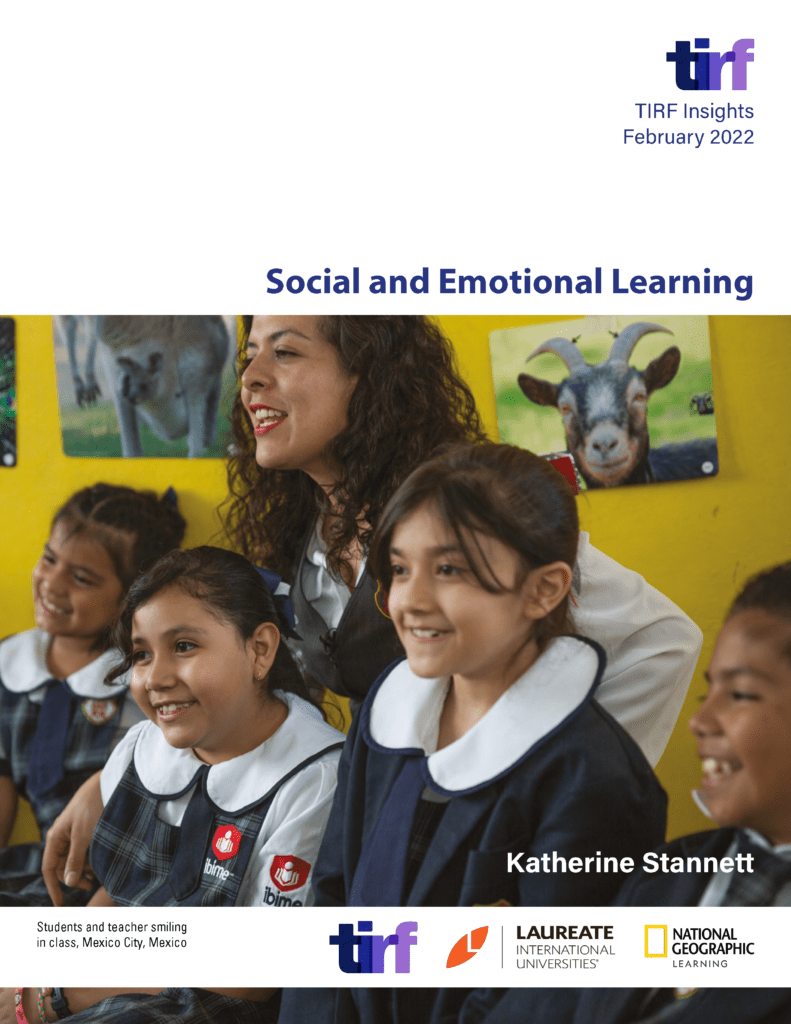
Other papers were produced in partnership with Laureate International Universities. The topics were English for specific purposes, English as a medium of instruction, and the Common European Framework of Reference. The most recent TIRF publication is about social and emotional learning. Written by Katherine Stannett, this report was produced in partnership with Laureate International Universities and National Geographic Learning. It will soon be available in other languages (i.e., Arabic, Chinese, and Spanish) and will be shared via our newsletter. Click here to subscribe if you like.
#7. The TIRF Alatis Prize
The conceptualization and implementation of the TIRF James E. Alatis Prize for Research in Language Policy and Planning in Educational Contexts has been an important initiative for TIRF. I remember heading back to the hotel after an evening meeting of the Trustees in the Washington, DC area. Dick Tucker was driving, and we were talking about Dr. James “Jim” Alatis’ many contributions to our profession – including his role as one of the founding Trustees of TIRF. MaryAnn Christison suggested that we start a fund in Jim’s honor, and at the continuation of our meeting the next morning, the plan was approved.
Since 2015, the Foundation has honored eight scholars for their publications on this important part of our field: Shondel Nero (2016), Katherine Mortimer (2017), Sarah Kangas (2018), co-authors Nelson Flores and Sofia Chaparro (2019), Nicholas Limerick (2020), Kate Seltzer (2021), and Chris Chang-Bacon (2022). I am grateful to those people who have supported the Alatis Prize – particularly the Alatis family and several individual donors.
#8. The TESOL Presidents’ Award
In 2017, TIRF was honored to be the recipient of the TESOL Presidents’ Award. According to the TESOL website, honorees are individuals or organizations outside of TESOL that have demonstrated a commitment to English language instruction and education, supported education in general, and/or have supported TESOL in furthering its mission. I was both thrilled and humbled to accept this award on behalf of the Foundation from TESOL President Dudley Reynolds at the 2017 TESOL International Convention and English Language Expo in Seattle.
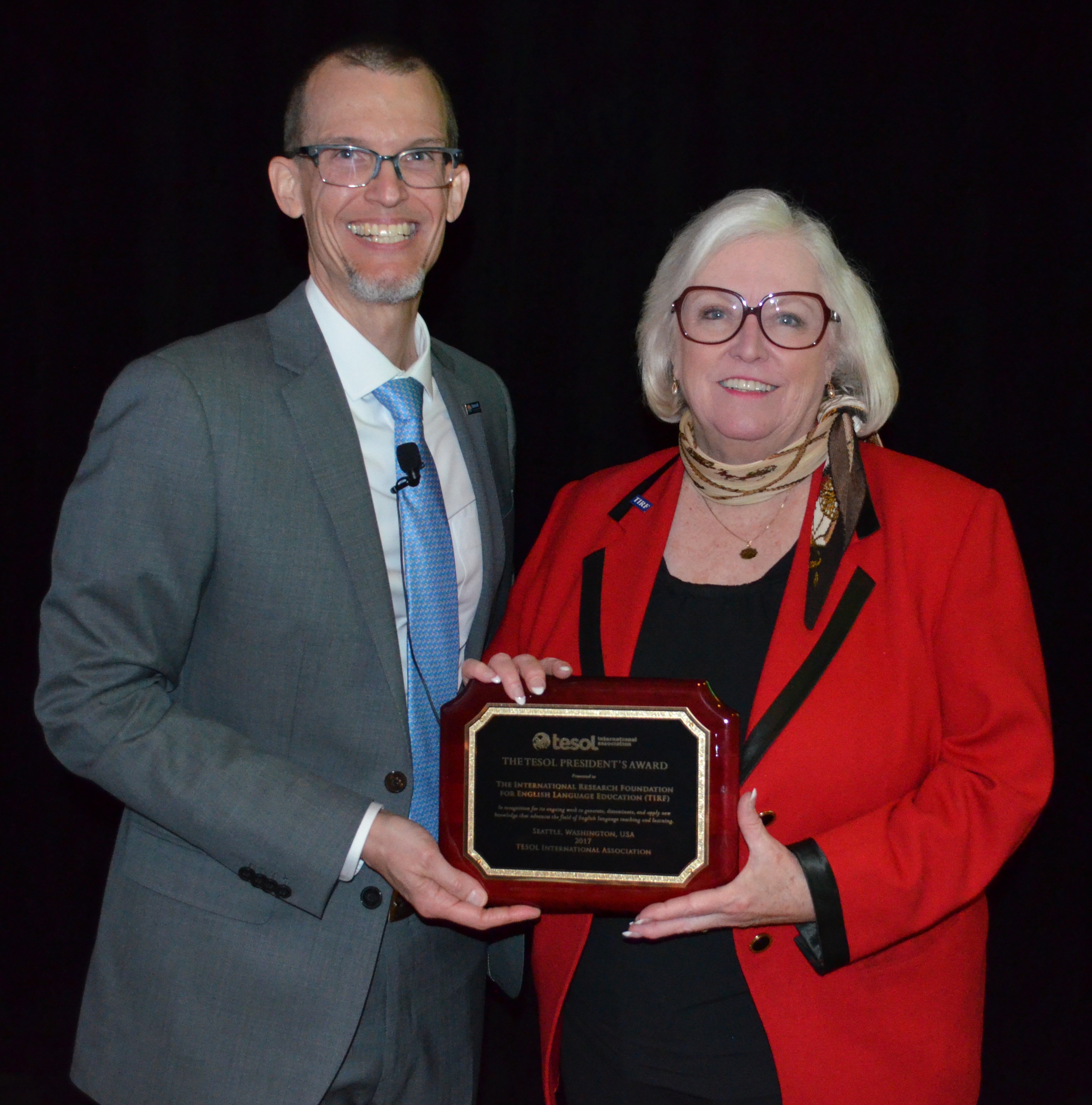
For TIRF to receive the TESOL Presidents’ Award meant a great deal to the Foundation, but also to me personally, for three reasons. First, I had served as the President of TESOL (1998-1999) and I knew how much thought went into selecting the recipients for this prestigious award. Second, TIRF was started with funding from the TESOL association, and to be recognized by one’s parent is always gratifying. Third, this award has been given to outstanding organizations and individuals, including the British Council, the Center for International Exchange of Scholars, Paulo Freire, IATEFL, International Rescue Committee (IRC) Education team, Hillary Rodham Clinton, the Spencer Foundation, the UNICEF Education for Development Unit, among others. For TIRF to be included in this list is indeed an honor.
#9. The TESOL-TIRF Co-sponsored Research Symposium
In 2017, the Foundation collaborated with TESOL International Association to host the TESOL-TIRF Research Symposium, which was held in Monterey, California. The Symposium featured sessions alternating between panel presentations and breakout groups. The topics of the three panel presentations were (1) TIRF’s Research Priorities and TESOL’s Research Agenda; (2) Formulating Your Research Questions; and (3) Connecting Research to Policy and Practice. The three breakout sessions that were offered reflected the previous panel’s topic. The sessions’ topics were (1) Research Topics; (2) Research Methodology Choices; and (3) Making Connections.
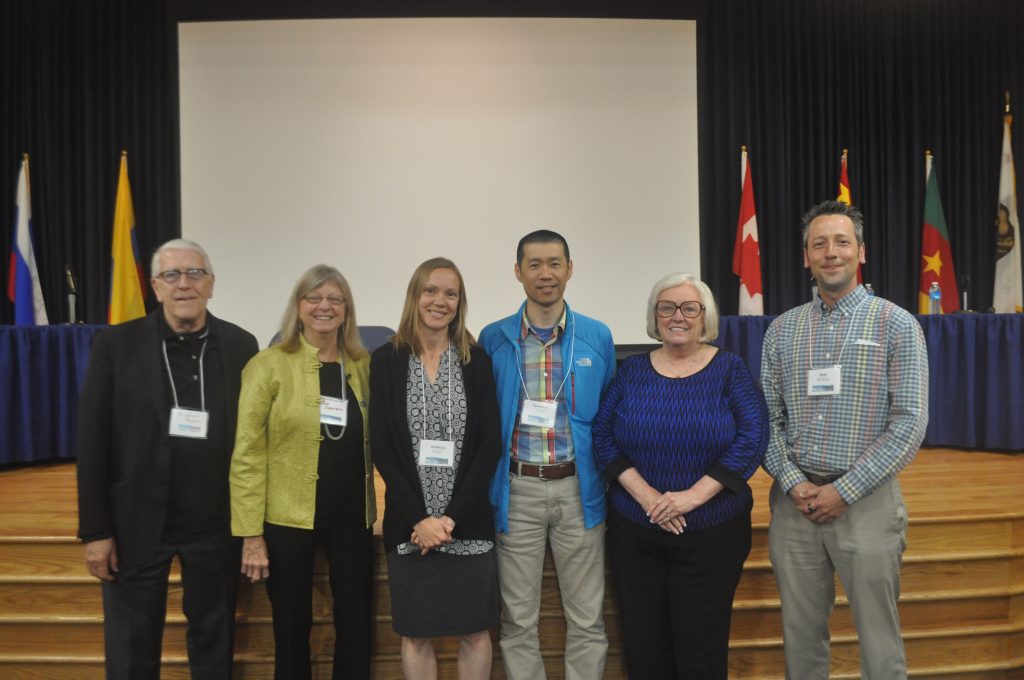
Left to Right: TIRF Trustees Richard Boyum and Jodi Crandall; TIRF Grantees Rebecca Bergey and Tomohisa Machida; TIRF Trustee Kathi Bailey; and TIRF COO Ryan Damerow
The Symposium was considered a success, as determined by the feedback collected by participants, and there continues to be demand for future such events. TIRF’s Trustees wish to meet that demand in the future, perhaps by offering symposia in different places around the world, with input and collaboration from varying individuals and organizations. Since one aspect of TIRF’s mission is building a network of researchers globally, we are keen on dedicating our resources to such activities. If you’re interested in viewing any of the panel recordings, please click here for further details.
#10. TIRF’s Professional Services
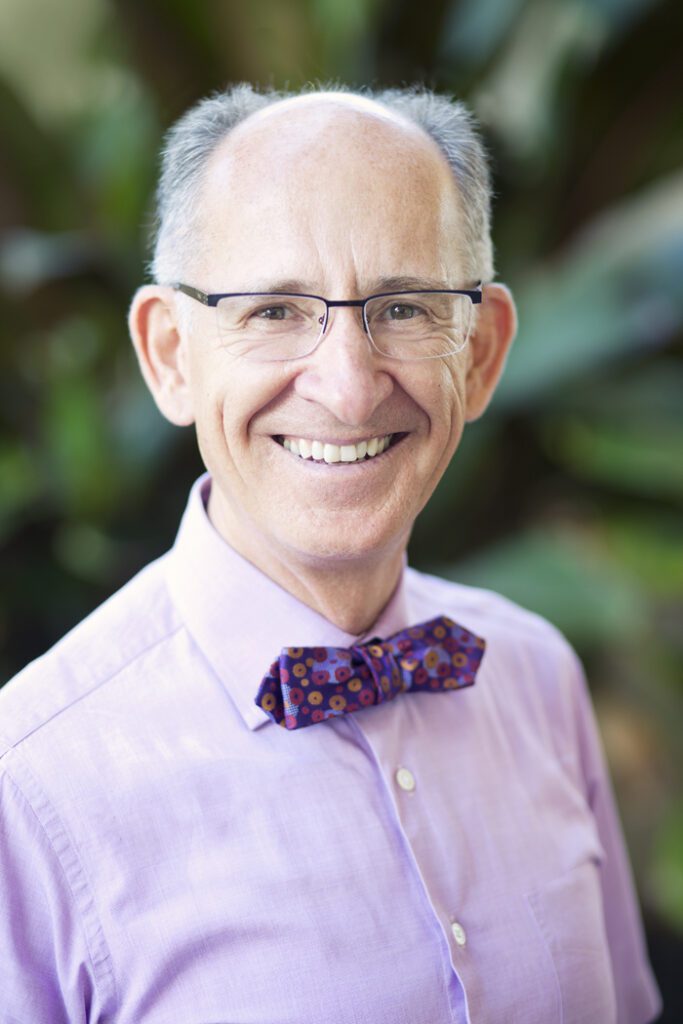
A recent development is the establishment of TIRF’s Professional Services. These services include program evaluation for language centers, professional development for program directors, and training in classroom research methods.
A particularly exciting offering is “TIRF Talks” – a speakers’ bureau concept through which the Foundation provides expert presentations to organizations around the world. TIRF handles the arrangements, and the speakers donate a portion of their fee to the Foundation. So far, the speakers have included:
- Neil Anderson: “Reading Effectively to Write Successfully”
- Kathi Bailey: “Creativity in EFL Teaching – Three Frameworks to Promote English Language Learning”
- Michael Carrier: “Blended Learning in ELT”
- Keith Folse: “Practical Ideas for Improving Students’ Vocabulary”
- Phil Hubbard: “The Flipped Language Classroom and Beyond”
- Greg Kessler: “The Future of Language Education – Designing Meaningful Experiences”
- Jun Liu: “Intercultural Communication”
- David Nunan: “Educating Young Language Learners for a Rapidly Changing World”
- David Nunan: “Research Matters”
We look forward to continuing our speaker activities via TIRF Talks, and are aiming to have exciting updates to share later this year about our professional services.
#12. Working with TIRF’s Volunteers & Staff
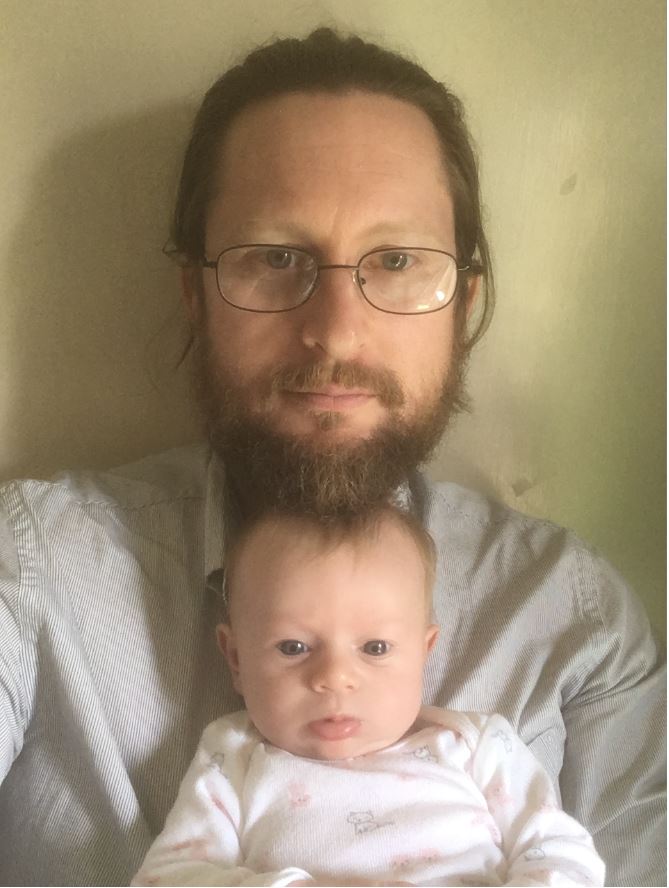
Wyatt Boykin & His Daughter, Hazel
To do long-lasting, meaningful work and accomplish its goals, a nonprofit foundation like TIRF must rely on outstanding people. I have been blessed in these past 13 years to work with many talented people who share and promote TIRF’s vision. Our staff member, Ryan Damerow, went from being a part-time administrative assistant to becoming the Foundation’s Chief Operating Officer. The volunteers include the reviewers who adjudicate the DDG proposals, the many people and organizations who have made in-kind donations to TIRF via various services provided, and our unpaid intern, Wyatt Boykin, whose service to TIRF helped him meet the requirements for his masters degree in International Educational Management at MIIS. For five months, Wyatt updated TIRF’s digital resources, wrote newsletter articles, assisted with our fundraising, and diversified the donor representation on our website. It was he who coined the phrase which became the slogan for TIRF’s 20th anniversary year: “Proud of our past, focused on our future.”
Certainly, the main group of consistent volunteers during my presidency has been the TIRF Trustees. Working on the expansion and diversification of our Board has been a wonderful experience. When TIRF was founded (with generous support from the TESOL International Association), the original Trustees were members of TESOL’s Association Advancement Committee (Jim Alatis, Ed Anthony, Russ Campbell, Jodi Crandall, Joan Morley, and Dick Tucker). They were joined by Rick Jenks as they transitioned to their new roles as the first Trustees. Up to that point, all the Board members were U.S. based, but other Trustees soon joined, including our ex officio members: the ex-officio representatives from the British Council and the official observers from the U.S. State Department Office of English Language Programs. Other countries that were soon represented on the Board were Australia, Brazil, Canada, China, Egypt, France, Germany, Greece, Guatemala, Japan, the Netherlands, Russia, the United Kingdom and the United Arab Emirates. More recently, Trustees residing in Denmark, Norway, and Peru have joined the Board.
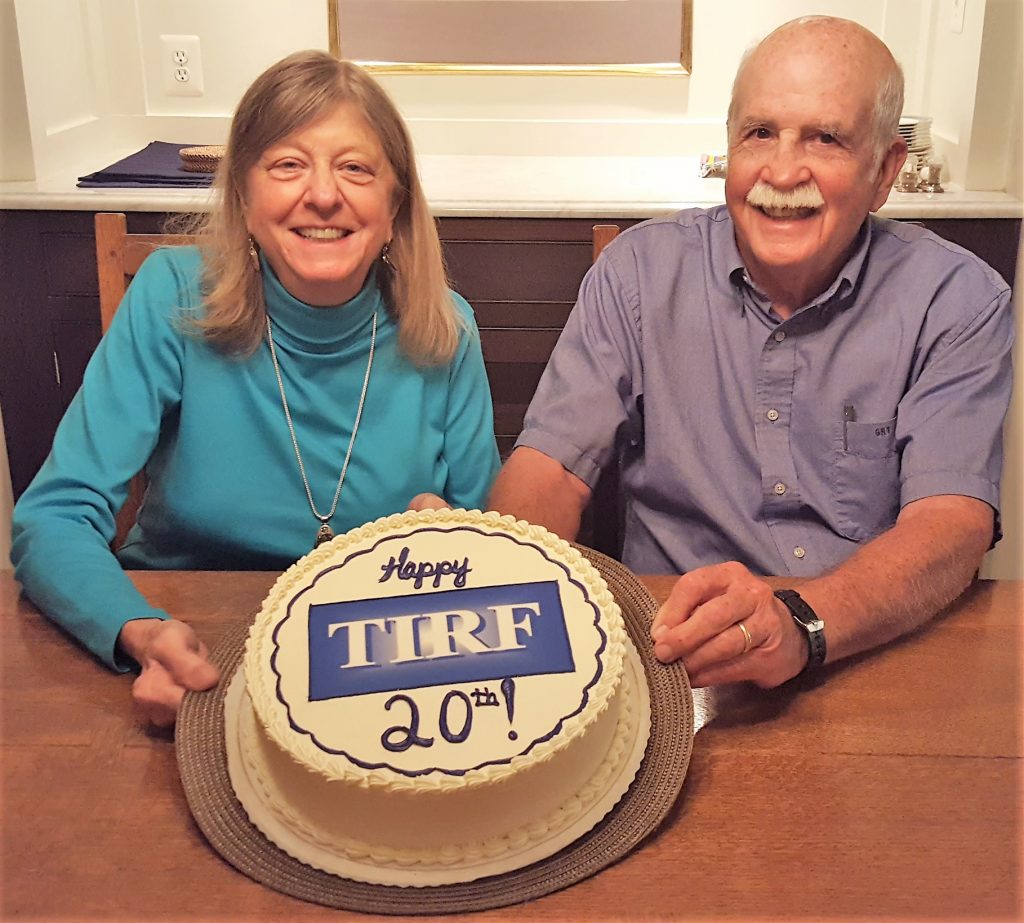
Jodi Crandall & Dick Tucker
The Trustees have represented the Foundation at many conferences and events around the world. They are expected to work actively for the Foundation, to help with fundraising, attend meetings, serve on committees, contribute to the newsletter and TIRF’s publications, and support TIRF’s mission. They are not paid for their service and their expenses are not reimbursed. Their work is indeed a labor of love.
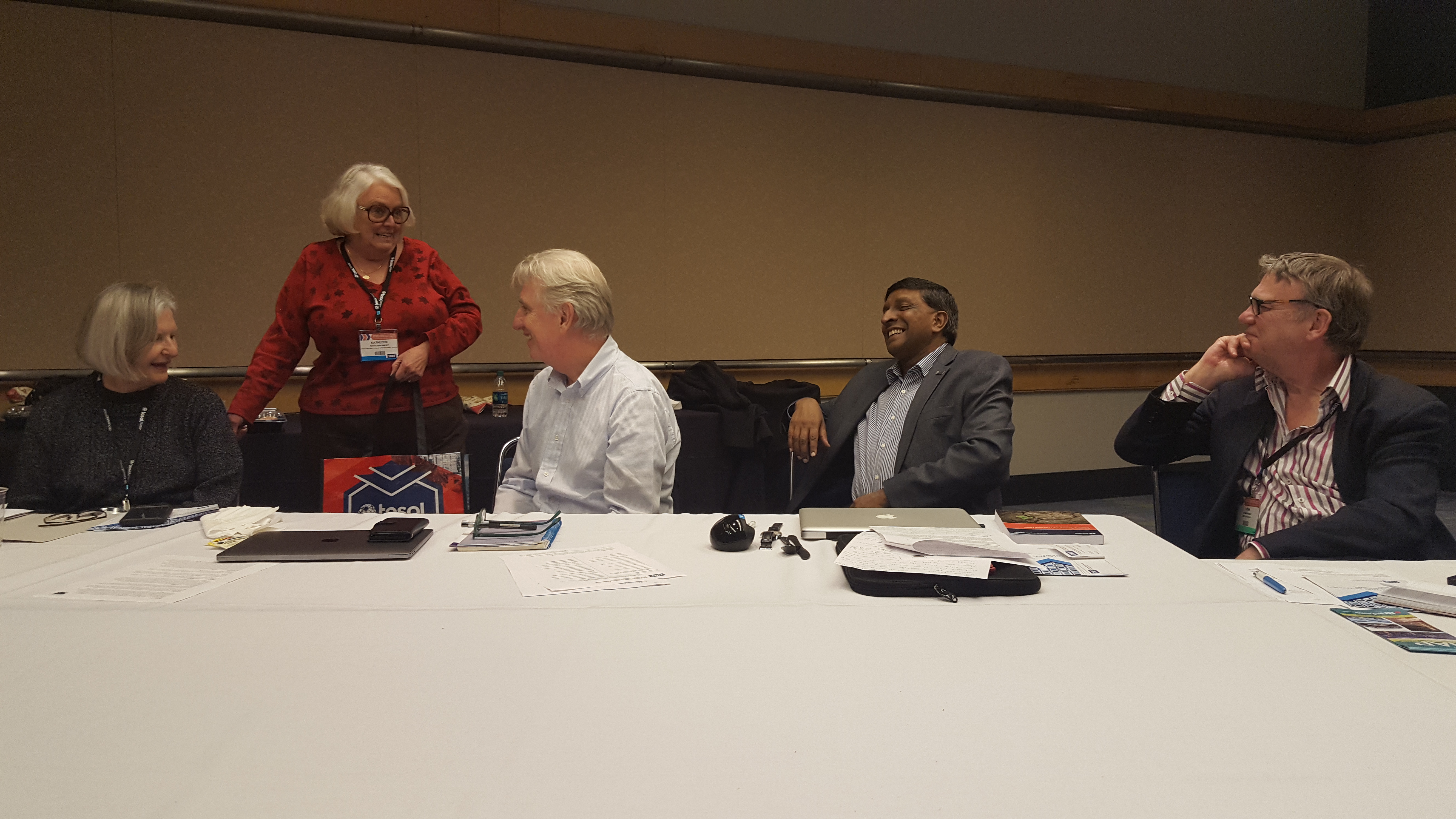
Thinking about the Trustees leads me to share one special memory of the March 2018 Board meeting in Chicago. It was the end of the meeting at which Andy Curtis and Barry O’Sullivan joined our team, and when John Knagg rotated off the Board. In a gesture that was meant to be sweet (but probably just seemed silly), I followed the Hawaiian tradition of giving people leis to say “Aloha!” – an expression which is used for both greeting (for Andy and Barry) and leave-taking (for John). But since the Foundation is thrifty in all its endeavors, these leis were not made of tropical flowers. Instead, they were made of outdated TIRF bookmarks (generously produced and donated over the years by the staff at IGA – El Instituto Guatemalteco Americano, Guatemala’s Bi-National Center). I asked John and the continuing Trustees to share with the new members why they volunteered to work with TIRF – particularly as that service was both time-consuming and unpaid. The Trustees’ comments were absolutely inspirational. That moment will always remain one of my fondest memories of the past 13 years. I am very grateful to my fellow Trustees, both past and present, for making my term as TIRF’s president so rewarding.
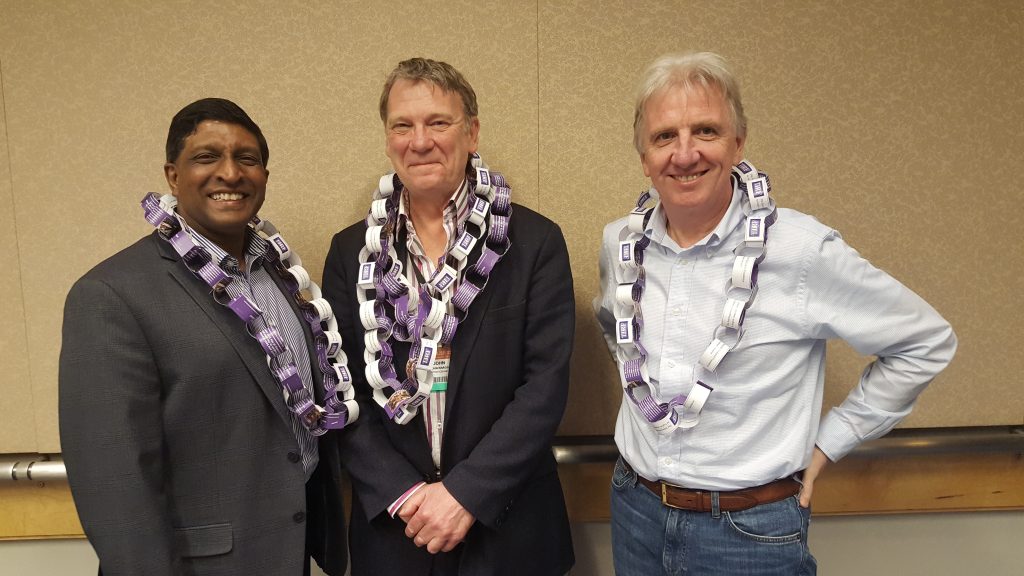
(Left to Right): Andy Curtis, John Knagg, and Barry O’Sullivan
#13. Doctoral Dissertation Grants
Of course, the Doctoral Dissertation Grants (DDGs) have always been TIRF’s “flagship” program. Started in 2002, the intent was to raise enough money to fund an additional grantee each year. Our volunteer reviewers are currently adjudicating the proposals for the 2022 competition and we are planning to fund as many projects as we can, given our current budget. Since the DDG program began, TIRF has supported 170 grant recipients from nearly 30 countries for a grand total of more than $520,000. Over the years, the DDG program has been supported by Cambridge Assessment English, Cambridge University Press, Educational Testing Service, and many individual donors. In 2013, John Knagg, the British Council’s representative on TIRF’s Board at that time, made a proposal which substantially expanded the Foundation’s DDG budget and reach. His vision was that the Council would contribute funding to support proposals from applicants originating from and/or doing research in under-resourced regions of the world. As a result of that expanded funding, the 2014 DDG competition yielded over three times as many proposal submissions as we had ever seen before. I am grateful to all of our donors for their support of this worthy cause.
If you would like to learn about the DDG recipients’ research, you can read about their studies by clicking here. You can also access some of their individual stories in our newsletter (see, e.g., comments from Jaehan Park, Steven Talmy, Kimberly Woo, and Weiwei Yang). A collection of video-recordings from some of our grantees can be found on TIRF’s YouTube channel. For a quick lift to your spirits, you can watch a 4.5-minute collection of brief comments from 10 of these grant recipients.
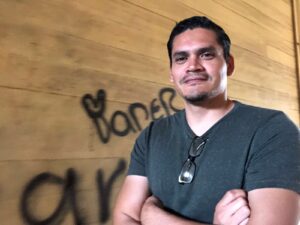
We often hear from the awardees about how receiving a TIRF grant has helped them. For instance, earlier this week we received the final DDG report from Dr. Christian Fallas Escobar. As of this fall semester, he will be working as a postdoctoral research associate at the University of Texas in San Antonio, examining the challenges faced by first-generation Latinx students pursuing engineering degrees. Christian wrote, “I will always be grateful for the support that TIRF provided to me during the completion of my doctoral studies.”

We also heard from Dr. Scott Grapin, now at the University of Miami. He wrote, “I am deeply grateful for TIRF’s generous support, which has had a significant impact on my trajectory as an early-career scholar. I am also grateful for TIRF’s continued support of its grantees, for example, through the opportunity to contribute to Dr. Christison and colleagues’ edited volume. I hope to stay involved with TIRF throughout my career and contribute to its important mission.”
Concluding Comments
For once, writing the conclusion to the Chair’s Report is easy: It is the refrain I’ve used repeatedly over the years, and one which follows nicely from Christian’s and Scott’s messages. Please won’t you make a donation to TIRF? Your gift will help the Foundation continue its work. My hope is that many, many more people will benefit from their association with TIRF and that the next 13 years will be as lucky for all our stakeholders as the past 13 have been for me.
Best wishes,
